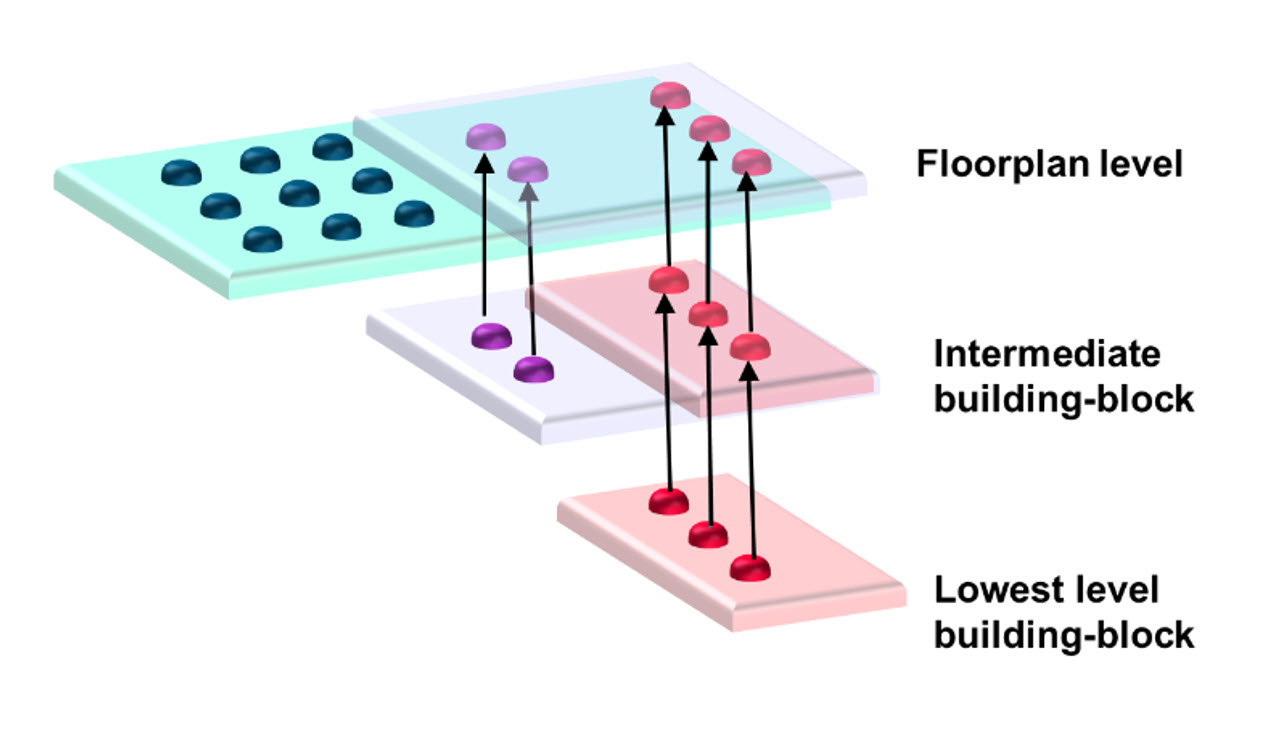DAC starts June 24th and I can already feel the buzz of excitement building up as I receive updates from EDA vendors like Keysight EDA. Talking with Scott Seiden, Director Strategic Marketing, Keysight EDA Portfolio, I learned that they have the largest booth on the first floor, now that’s a statement that caught my attention. This… Read More
 WEBINAR: Revolutionizing Electrical Verification in IC DesignIn the complex world of IC design, electrical…Read More
WEBINAR: Revolutionizing Electrical Verification in IC DesignIn the complex world of IC design, electrical…Read More Silicon Catalyst on the Road to $1 Trillion IndustryThere were quite a few announcements at the…Read More
Silicon Catalyst on the Road to $1 Trillion IndustryThere were quite a few announcements at the…Read More Hierarchically defining bump and pin regions overcomes 3D IC complexityBy Todd Burkholder and Per Viklund, Siemens EDA…Read More
Hierarchically defining bump and pin regions overcomes 3D IC complexityBy Todd Burkholder and Per Viklund, Siemens EDA…Read More CDC Verification for Safety-Critical Designs – What You Need to KnowVerification is always a top priority for any…Read More
CDC Verification for Safety-Critical Designs – What You Need to KnowVerification is always a top priority for any…Read More Ceva Unleashes Wi-Fi 7 Pulse: Awakening Instant AI Brains in IoT and Physical RobotsIn the rapidly evolving landscape of connected devices,…Read More
Ceva Unleashes Wi-Fi 7 Pulse: Awakening Instant AI Brains in IoT and Physical RobotsIn the rapidly evolving landscape of connected devices,…Read MoreAnalog Bits at the 2024 Design Automation Conference
Analog Bits, the industry’s leading provider of low-power mixed-signal IP solutions will be demonstrating several IP’s in TSMC advanced nodes at DAC. Analog Bits is also a long time DAC supporter and very active in the semiconductor and on SemiWiki, absolutely. Great company!
As power management and energy efficiency is getting… Read More
Podcast EP228: A New, Fast and Accurate Approach to Power Analysis with Innergy Systems’ Ninad Huilgol
Dan is joined by Ninad Huilgol, founder and CEO at Innergy Systems. Ninad has extensive experience in design verification of ultra low-power mobile SoCs. Previously, he has worked in senior engineering management at various semiconductor companies such as Broadcom and Synopsys. He has multiple power- and design-related patents,… Read More
Silicon Catalyst Announces Winners of the 2024 Arm Startups Contest
The Silicon Catalyst-Arm start-up contest winners were announced this week. This was the first contest of its kind so there was quite a bit of excitement. SemiWiki has worked closely with Silicon Catalyst for the past four years which has been quite the journey. Out of the one hundred plus companies SemiWiki has worked with over … Read More
Synopsys-AMD Webinar: Advancing 3DIC Design Through Next-Generation Solutions
Introduction of 2.5D and 3D multi-die based products are helping extend the boundaries of Moore’s Law, overcoming limitations in speed and capacity for high-end computational tasks. In spite of its critical function within the 3DIC paradigm, the interposer die’s role and related challenges are often neither fully comprehended… Read More
INTERVIEW: Bluespec RISC-V soft cores in Achronix FPGAs
Recently, a partnership between Achronix and Bluespec has been in the news. Bluespec RISC-V processors are available as soft cores in a Speedster®7t FPGA on Achronix’s VectorPath® PCIe development card or in a standalone Speedster7t FPGA. We spoke with executives from Achronix and Bluespec about the impetus for this effort … Read More
Reduce Risk, Ensure Compliance: Hardware-Assisted Verification for Design Certification
Prologue
Peter was running late for two reasons. First, he encountered unexpected heavy traffic and arrived ten minutes late for a crucial meeting with a customer to run a compliance test of his new 6G phone design prototyped on FPGAs. This prototype’s success was pivotal, as it could secure a significant purchase order.… Read More
Automotive Autonomy’s Quiet Advance Through Radar
Given false starts and OEM strategic retreats you could be forgiven for thinking that the autonomous personal car dream is now a lost cause. But that’s not quite true. While moonshot goals have been scaled back or are running under wraps, applications continue to advance, for adaptive cruise control, collision avoidance, automatic… Read More
Something new in High Level Synthesis and High Level Verification
As SoC complexities continue to expand to billions of transistors, the quest for higher levels of design automation also rises. This has led to the adoption of High-Level Synthesis (HLS), using design languages such as C++ and SystemC, which is more productive than traditional RTL design entry methods. In the RTL approach there… Read More
Mastering Atomic Precision – ALD’s Role in Semiconductor Advancements
Atomic layer deposition (ALD) is a thin-film deposition method that continues to enable continuous advances in semiconductor device fabrication. Essentially, it involves exposing substrates sequentially to at least two different vapor phase atmospheres in which self-limiting reactions take place on the surface: the first… Read More






I Have Seen the Future with ChipAgents Autonomous Root Cause Analysis